GOLD Learning Tongue-tie Online Symposium 2019
Also, dive deeper with a look at how to identify and treat the compensatory mechanics of suck after revision, the impact of tongue-tie on the myofascial system and primitive reflex integration, tongue-tie and it's impact on the musculoskeletal and nervous systems, the impact on orofacial myofunctional development and a look at infant frenotomy and pain.
These informative presentations that will leave you feeling more confident and armed with clinical skills that you can put into practice right away to help the families in your care. This program is approved for 10 CERPs (7 L-CERPs, 3 R-CERPs).
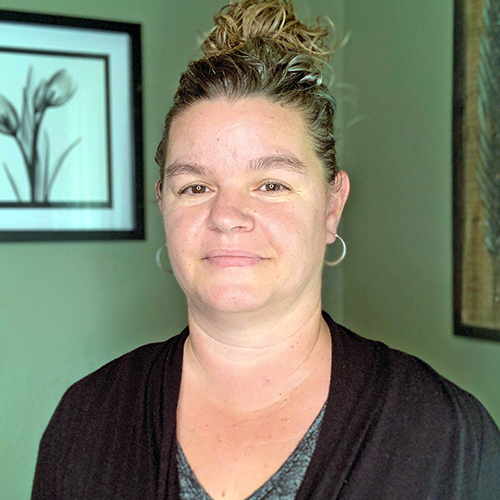

Christine Staricka is a Registered, International Board-Certified Lactation Consultant and trained childbirth educator. As the host of The Lactation Training Lab Podcast, her current role focuses on training and coaching current and aspiring lactation care providers. Christine created and developed The First 100 Hours© concept, an early lactation framework designed to support lactation care providers with the knowledge and mindset they need to help families optimize early lactation. Christine worked as a hospital-based IBCLC for 10 years and has over 20 years experience providing clinical lactation care and support. She provides clinical lactation care to families at Baby Café Bakersfield and serves as its Director. Christine recently completed 6 years of service on the Board of the United States Lactation Consultant Association (USLCA.) She holds a Bachelor's Degree from the University of Phoenix. She has been married for 27 years, lives in California, and is the proud mother of 3 amazing daughters.
Topic: Tongue-Tied and Troubled: A Breastfeeding Journey at Risk - [View Abstract]
Topic: Your Responsibility to the WHO Code: Evaluating Real-World Scenarios for Compliance - [View Abstract]
Objective 1: Identify 3 problems of lactation which are commonly reported in dyads where babies have or are suspected to have oral restrictions.
2. Objective 2: Describe 2 categories of lactation problems which may be observed in these dyads.
3. Objective 3: Explain 3 lactation-supportive routines and anticipatory guidance which might be recommended to a dyad in this population.
A growing body of work supports the lactation care provider in assessing, referring, and infant feeding after a revision of oral restrictions; far less has been said regarding ongoing lactation care when revision is not part of the plan in the short- or long-term. Whether because revision services are unavailable, inaccessible, or not desired by parents, the dyad that includes a baby with non-revised oral restrictions will require a customized plan to avoid problems of lactation related to infants with oral restrictions. This presentation will equip the lactation care provider with tools to support the identified population of dyads where the infant has or is suspected to have oral restrictions. (These tools shall include: a review of situations which might lead a dyad to be considered part of this specific population; a comprehensive understanding of the categories of potential problems of lactation associated with this population; and the creation of a lactation care plan with clinical skills specifically designed to consider and address the needs of a dyad in this population along the entire spectrum of normal lactation.) Lactation care providers in any setting and with any level of training will benefit from this review of the issue as it offers a deeper understanding of why particular tools, techniques, and routines might be required for this population as compared with other populations of dyads.
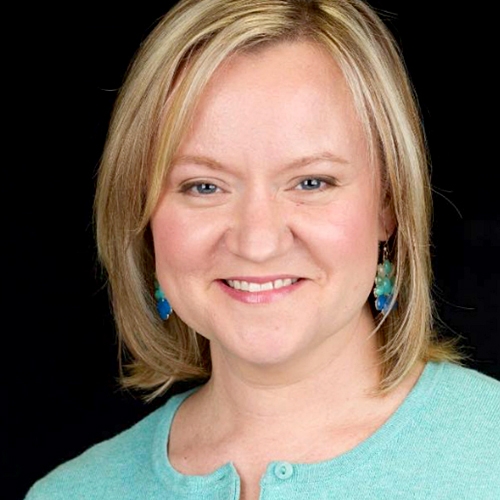

Lisa Lahey RN, IBCLC, OMT has worked for 23 years in maternal child health as a nurse and lactation consultant in L/D, postpartum, newborn nursery, NICU, and perinatal education. Lisa is currently working on her master's degree for Family Nurse Practitioner. An IBCLC for 20 years, Lisa has a special interest and expertise in tethered oral tissues. Lisa’s private practice Advanced Breastfeeding Care provides home visits or office consults for complex feeding issues as well as joyful breastfeeding. Lisa also provides myofunctional therapy to babies, children, and adults in a functional orthodontic office. Lisa is a contributing author to the book Tongue Tied. Lisa enjoys teaching assessment fundamentals and oral exercises when she lectures at conferences and courses. Clinical photography and nature photos are also a favorite hobby. Most of all, she is a mom to five children (all were breastfed) who keep her busy and remind her daily of life’s joys and treasures traveling and hiking with her family to unplug from a busy pace in life.
1. Describe and define key aspects of anatomy and physiology of the human tongue and lips.
2. Develop an understanding of the physiology involved as an infant sucks and breastfeeds.
3. List key appearance items when doing an oral exam for tethered oral tissues.
4. Review clinical photos of TOTS to discern variations of normal to restricted appearance of frenulums.
5. Functional aspects to assessment through use of current screening tools and functional symptoms and behaviors that are noted by the IBCLC during assessment and feeding.
The IBCLC must develop and expand knowledge of the 3 foundations key to TOTs assessment which are anatomy, appearance, and function. This talk will review anatomy and physiology concepts, explore appearance of frenulums, and discuss current functional screening tools that can be utilized for assessment.
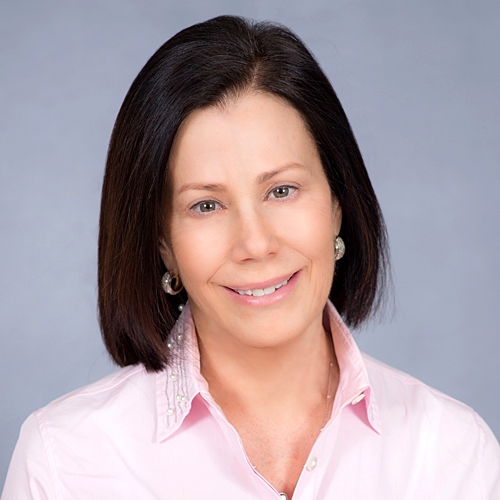

Lori L. Overland, M.S., CCC-SLP, C/NDT, CLC is a licensed speech and language pathologist with her neurodevelopmental certification and certificate as a lactation counselor. Lori is currently working on her IBCLC under the mentorship of Dr. Tina Smilie M.D., IBCLC, and Cathy Watson-Genna IBCLC. Lori’s private practice focuses on infants, toddlers and preschool children with oral sensory-motor/feeding disorders. Lori has co-authored two books: A sensory motor approach to feeding, and Functional assessment and treatment of tethered oral tissue. In addition to her private practice, Alphabet Soup, Lori is a member of the TalkTools® speakers’ bureau, and has lectured on sensory-motor/feeding disorders around the United States and internationally. Lori holds degrees from Hofstra University and Adelphi University.
1)Participants will understand the goal of a functional assessment of the motor skills to support breast feeding.
2) Participants will be able to distinguish active wound management from neuromuscular re-education post frenotomy.
3) Participants will be able to implement at least four functional post op exercises to support suck rehabilitation
This session will focus on functional assessment and treatment of tethered oral tissue in the breastfeeding infant. Participants will understand the importance of task analysis of the motor skills to support sucking, prior to referring an infant for a release. Post op treatment has focused on active wound management (Ghaheri, B. 2017) rather than neuromuscular re-education. This approach multidisciplinary approach encourages lactation consultants to partner with body works specialists and speech pathologists to develop the underlying motor skills to support sucking.
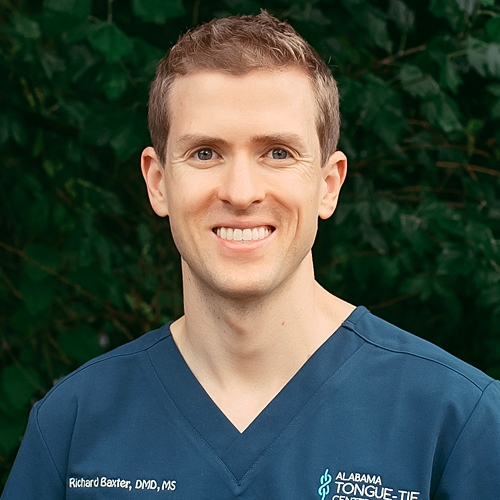

Dr. Richard Baxter is a board-certified pediatric dentist and board-certified laser surgeon. He is a nationally recognized speaker on tongue-ties, and author of the bestselling book Tongue-Tied: How a Tiny String Under the Tongue Impacts Nursing, Speech, Feeding, and More. He is passionate about educating parents and healthcare practitioners about the effects a tongue-tie can have throughout the lifespan. He lives in Birmingham, AL with his wife, Tara, their five-year-old old girls, Hannah and Noelle, and infant Molly. He is the founder and owner of the Alabama Tongue-Tie Center where he uses the CO2 laser to release oral restrictions that are causing nursing, speech, dental, sleep and feeding issues. He had a tongue-tie himself, and all three of his girls were treated for tongue and lip-tie at birth, so for him, this field is a personal one. In his free time, he enjoys spending time with his family and outdoor activities. He serves as an elder at his church and is on the board of Reach the Rest, a global missions organization. Dr. Baxter also participates in many overseas dental mission trips. He is currently working on several research and educational projects related to tongue-ties.
1. Know the common issues that can be affected by tongue-tie.
2. Know what a posterior tongue-tie is, and how to identify it.
3. Know what a lip-tie is, and how to identify it.
4. Understand the scientific basis and rationale for treatment of tongue-tie and lip-tie as it relates to breastfeeding, solid feeding, speech, sleep, and breathing.
5. Understand the effect a non-released tie can have on a patient throughout the lifespan.
Tongue-Tie certainly impacts breast and bottle-feeding, but also can have a significant impact on solid feeding, speech, breathing, and sleep. In this discussion, Dr. Baxter will share about the impact untreated ties can have on patients and their families, and how treating early in life can solve many of these issues. The presentation will highlight the role of the tongue in the essential functions of life. Many case studies of children who have struggled for years due to a tethered tongue and lip will be shared along with treatment videos, and parent testimonials.
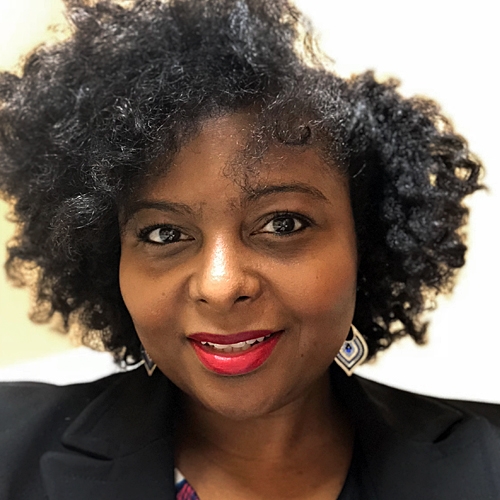

New moms come to Tamara Hawkins for a birthing and breastfeeding plan, but what they get is the permission to abandon beliefs about what the experience should be. What they get is the insight to define their own journeys to and through motherhood—one unpredictably beautiful step at a time. What they get is the confidence to toss the all parenting books aside and to trust their own yes. As the Director of Stork and Cradle, Inc., a passion-fueled prenatal education group specializing in childbirth classes and lactation consultation based in New York City, Tamara brings over twenty years expertise as a Maternity Nurse and Family Nurse Practitioner to deliver classes and programs that blend holistic knowledge and clinical care for mothers and their babies. As instructors and consultants, Tamara and her team offer insight and advice that is data driven, educationally sound, but most importantly, empowerment focused. With Stork and Cradle, women soon realize that their success as moms is not determined by epidurals or pumped ounces, but rather by the power that comes with honing their intuition and simply flowing and flourishing with their babies. An impassioned advocate for birth and breastfeeding equity, she is a Lamaze Certified Childbirth Educator, an International Board Certified Lactation Consultant and a Certified Holistic Health Counselor. Her private practice as an IBCLC accepts several private insurances. Learn more about her work at www.storkandcradle.com.
1. Increase competence of discussing with a parent the infant’s breastfeeding journey from latch, suck, swallow, breathe and how tethered oral tissues can impact this experience.
2. Understand how to help parents develop a plan to optimize infant’s breastfeeding and support them in making the step-by-step journey to optimal infant oral development.
3. Develop a framework of integrative coaching when parents exhibit resistance based on misunderstanding from primary care providers regarding evaluating, diagnosis, management and treatment of tethered oral tissues.
Trending in lactation consultants’ conversations are concerns of parents choosing not to release tethered oral tissues, declining structural realignment work, choosing frenotomy providers that are not on preferred consult lists, and experiencing less than desired outcomes or breastfeeding cessation. How can IBCLCs support families that might otherwise be ambivalent to body work, releasing restrictions, and follow up to ensure continuity of care and breastfeeding success? In this talk, we will explore the journey of holistic lactation care starting from a functional feeding assessment to helping parents reach a self-imposed goal of breastfeeding success with babies that have tethered oral tissues.
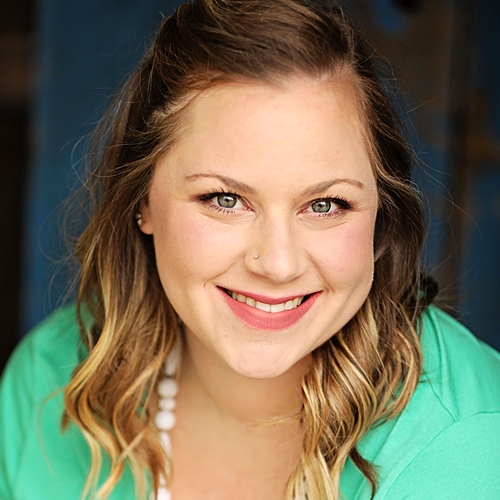

Dr. Brandi is the pediatric chiropractor in a practice that provides chiropractic care for women and children. Her focus is on infants with feeding difficulties and children with neurodevelopmental delays. Dr. Brandi created a program at her practice which incorporates chiropractic, optimal nutrition, myofascial/cranial-sacral techniques, and neurofunctional exercises into one comprehensive program. Her ultimate goal is to naturally support the body (brain, gut, spine and immune system) to work together in balance and help children achieve their maximum life potential. Dr. Brandi attended Cleveland Chiropractic College after earning a bachelor’s degree from the University of Missouri- Kansas City. She is also certified by the Academy of Chiropractic Family Practice. In her free time, Dr. Brandi enjoys spending time outdoors with her husband and two sets of fraternal twins.
Objective 1. Describe the myofascial system and how it is affected by oral ties.
Objective 2. Describe how tongue ties can hinder neuro-development and primitive reflex integration
Objective 3. To be able to identify 3 sensory systems that are affected by oral ties and activities to promote normal movement patterns to support these sensory systems.
Objective 4. Discuss the importance of a team approach when assessing and caring for the tongue tied infant.
Oral ties are often diagnosed and released during infancy to improve the breastfeeding relationship between mother and baby. But what happens if ties go undiagnosed? This course will review tethered oral tissues and their relationship in a breastfeeding dyad and the neurodevelopment of an infant and beyond. We will explore the implications of oral restrictions on the myofascial system throughout the body. Movement patterns, posture, and primitive reflex integration can all be affected by oral ties. Signs, symptoms, assessment tools, and strategies for co-management between IBCLC and bodyworkers will be discussed. Attendees will also learn neuro-biomechanical implications of TOTs beyond breastfeeding. Several case studies will be discussed and how successful management can be achieved with a team approach.


Effath Yasmin is India's leading Biodynamic Craniosacral Therapist, an award winning International Board Certified Lactation Consultant & a Documentary Film Maker. She is also an International Speaker, an Author & a Bach Flower Practitioner.
Her special interests lie in Infant Oral, Sucking & Airway Dysfunction, Tongue Tie, Birth Trauma, Craniofacial Development and a range of chronic physical and mental dis-eases & quantum energy phenomenon. She applies these sciences into Life Coaching, Inner Child Healing and Parenting. Her approach stems from fundamental truth of human organism is complete and self-regulatory and treatment & counselling approach is by deep listening & true empathy to mind body and spirit rather than by intervention.
She currently sits on several national & international professional boards.
She has spear-headed & dedicated her life to many projects with a central mission of advocacy, education and awareness for integrative multidisciplinary wellness approach worldwide. Her work has been published in the International Journals & a textbook and she writes extensively on print and digital media on the subjects of Breastfeeding, Tongue Tie, Parenting & Health related subjects.
Her international award winning film 'Untying Breastfeeding' exposes the glaring unseen obstacles to Birth & Breastfeeding & early parenting that can help restore motherhood and has been widely celebrated over 1500 Cities worldwide. She is currently pursuing her Ph.D. in Metaphysical Sciences.
Topic: Rethinking Surgical Tools - Infant Frenotomy & Pain - [View Abstract]
Topic: Trauma Informed Care in Clinical Infant Oral Assessment: Understanding Body Autonomy - [View Abstract]
Objective 1: Initiates a out of the box thinking self-inquiry into better understanding of the human body system and its excellent state of homeostasis and its best response trigger in any given circumstance.
Objective 2: Discusses the need for further investigation of study of Infant Pain post frenotomy.
Objective 3: Supporting techniques to pain management that supports self-regulation.
Ankyloglossia (tongue tie) impacts and can impair normal oral function in infants leading to a myriad of complications with breastfeeding. Increased awareness of this impact has led to increased diagnosis and treatment of tongue tie through frenotomy/frenectomy. These procedures are typically completed using one of two tools: scissors or laser and sometimes cautery. While the methods are equally effective when completed by a competent practitioner, the blood coagulation of the surgical incision made by a laser is cited as an major advantage in laser surgeries along with great advantage of visibility at the surgical site by the surgeon. Therefore laser release is widely perceived as superior to scissors in the recent development in LASER FRENECTOMIES.
There has been very little research that has been published on the post-procedural effects of surgical tool used. In her practice, the author has noted significant and consistent patterns in post-procedure pain, correlating to which tool is used for the release. This presentation attempts to highlight that it is critical we study the scale of pain experienced by infants post frenotomy in correlation to tool of surgery since Pain affects babies' nervous systems potentially changing the structure and physiology of the nervous system and be a cause of problems with sleep, feeding, and self-regulation. The Author will review specific data measurements that demonstrate these patterns, and present a theory for potential reasons of prefering one tool over the other for low risk Infant Frenotomies.
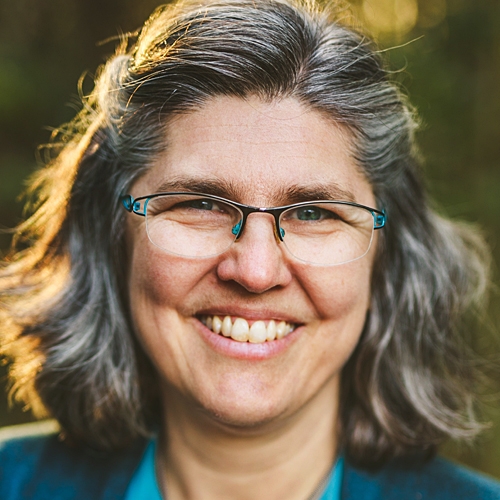

Ellen Chetwynd PhD MPH RN BSN IBCLC is a breastfeeding researcher, lactation consultant, and advocate. Her goal is to provide excellent care that is innovative and effective. Her clinical care is equally informed by, and leads to, her research and collaborations with fellow scientists. She is an advocate of breastfeeding families of all shapes, as well as the providers who care for them. Through her work as Chair of the North Carolina Breastfeeding Coalition she has contributed to the statewide work to provide Medicaid reimbursement in North Carolina, successfully funded a project to support clinics seeking to become breastfeeding friendly and increase access to equitable support of breastfeeding, implemented a statewide breastfeeding summit, and created an interactive statewide resource listing for breastfeeding resources at the county level. In her lactation consulting work, she is sought out by parents and clinicians for her work with difficult cases of pain and dysfunctional infant suck. She is a prolific writer, and her research and publications cover topics including breastfeeding and metabolic health, reimbursement for lactation consulting, LGBTQI+ families, and breastfeeding research methodology. She recently created and co-taught a full day workshop on breastfeeding research methods, and gets fired up about the numbers behind what we do to support families. At Next Level Lactation LLC, she and her partners provide advanced lactation educational opportunities.
1. Describe suck mechanics.
2. Identify compensatory suck mechanics used by babies with oral tethering.
3. Demonstrate techniques for identification and treatment of compensatory suck mechanics.
Babies with oral tethering don't have access to the full range of motion needed to create negative pressure at the back of their mouths so they can draw milk out of the effectively and painlessly. We can all assess the latch, but what is happening with the tongue, the breast and nipple, and the other muscles involved in the mechanics of suck after the baby’s mouth closes over the breast? How do we identify compensatory mechanisms convince babies to change them with the broader mobility they have after frenotomy? This presentation will teach participants how to visualize/experience normal infant suck. Compensatory suck mechanisms are the techniques that infants use during feeding when they don’t have access to adequate movement in their tongue and floor of their mouth. Infants are creative, and the strategies they develop are varied. Participants will learn how to identify and categorize compensatory mechanisms and use clinical skills to differentiate and assess muscle tension related to overuse and suck mechanics at the breast. A unique set of clinical techniques that can be used by the lactation consultant and taught to the mother addressing each category of compensatory suck mechanics will be introduced and illustrated through case studies.
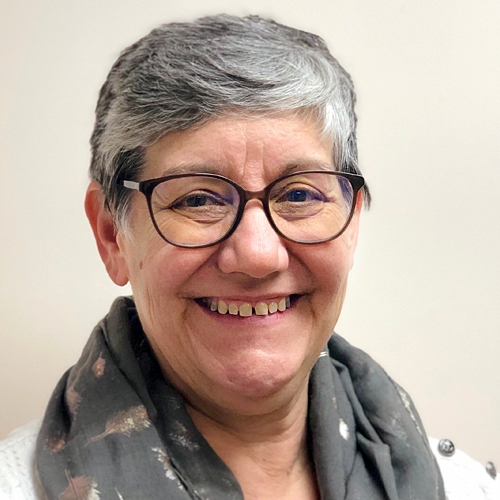

Dr. Sharon A. Vallone is a graduate of Rutgers University (AB Microbiology 1978) and New York Chiropractic College (1986). She completed her Diplomate in Clinical Chiropractic Pediatrics in 1996 through Palmer College and received her appointment as Fellow in Clinical Chiropractic Pediatrics in 2003. Dr. Vallone has a private practice limited to high risk pregnancies and challenged children in Connecticut and is currently the Chair of the Board of Kentuckiana Children’s Center in Louisville, KY and past Vice Chair of the International Chiropractic Association’s Council Pediatric Council. She is an international speaker, author, and editor of the Journal of Clinical Chiropractic Pediatrics. Sharon brings 33+ years of pediatric chiropractic experience with a primary interest in pregnancy, birth trauma, breastfeeding and problems with infant /toddler neurodevelopment.
Topic: Wondering about “The Wanderer?” The Vagus and Ankyloglossia - [View Abstract]
Objective 1: Describe altered biomechanics when tethered oral tissues are present and how they affect breastfeeding efficiency
Objective 2: List and describe common biomechanical compensations when tethered oral tissues are present
Objective 3: Discuss why addressing and correcting dysfunctional biomechanics can promote better outcomes when intervening with a release of tethered oral tissues.
The impact of tethered oral tissues on the fascial system of the neonate can be the origin of both successful and unsuccessful compensatory biomechanical alterations in an attempt to breastfeed. These biomechanical alterations can manifest as asymmetries in appearance and function as well as in behavioral challenges ranging from sleep disturbance, colic like symptoms and inconsolable crying. It is important to understand these issues when looking at the whole picture so as to improve outcomes when surgical interventions are required. The goal of this lecture will be to support the attendees with understanding the relationship between structure and function and how this ties in with physical limitations like tongue and lip tie, the biomechanical assessment and discussion of manual therapies available to assist the breastfeeding dyad.
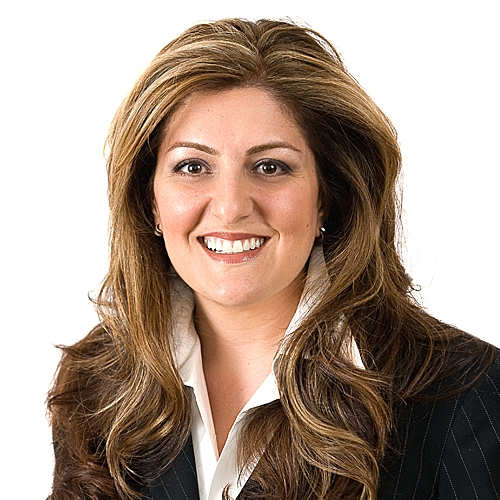

Dr Marjan Jones, a dental surgeon in Brisbane Australia pioneered a multi-disciplinary approach to the treatment of oral restrictions in Australia. With over 20 years’ experience with dental lasers and extensive knowledge of the comprehensive treatment of oral restrictions, her practice treats patients of all ages, offering a team-based approach to surgery incorporating in-house myofunctional therapy and orthodontics for treatment for children and adults. For infant patients, she collaborates with IBCLCs and cranial therapists for a comprehensive approach toward functional outcomes. She co-founded the Tongue Tie Institute designed to advance the education of health professionals in the treatment of oral restrictions. She now lectures to practitioners from Australia and around the world who have been introduced to a team approach to the management of oral restrictions. She has personal experience with the effect of tongue ties and their effect on herself and family (including breastfeeding challenges) and is determined to help others avoid or overcome their impact. She is a Fellow of the World Clinical Laser Institute, a member of the Academy of Laser Dentistry, the Academy of Breastfeeding Medicine and was the immediate past Chairperson of the Interim Board of the International Consortium of Ankylofrenula Professionals (ICAP). He passion for breastfeeding has resulted in studies toward IBCLC certification.
1. Explain the tongue and facial tissues as determinants of the development of jaws, tooth position and facial growth.
2. Beyond the well-known health implications of not breastfeeding, describe the risks of not breastfeeding on other facets of health including orofacial development and function.
3. Describe the orofacial implications of bottle-feeding and non-nutritive sucking on development of the dental arches and tooth placement.
4. List the links between infant compensatory behaviour as a result of tongue tie and potential soft tissue dysfunctions that can manifest across the life-span.
5. Recognize some basic parameters of jaw and dental appearance in patients under the age of 5 and utilise this toward feedback of methods in the assessment of the neonate.
Michelangelo at work - Tongue Tie and Orofacial Myofunctional Development
Our oral and facial muscles are the master sculptors of our jaws and face. Research and clinical findings show that changing resting oral posture and functional habits of our oral and facial muscles not only influence structure but also affect function. The important functions of the orofacial region include breathing, eating/drinking (including breastfeeding) and speaking.
Breastfeeding is the premier and pivotal determinant of orofacial myofunctional habits. Beyond the many risks of not breastfeeding, malocclusion (poorly positioned jaws and teeth) is a very significant risk.
As such it is important that all health practitioners working with neonates rally to educate, accompany and support breastfeeding dyads toward functional and breastfeeding for as long as possible.
The tongue’s ability to move (particularly to elevate) affects breastfeeding biomechanics. As such, a tethered tongue’s range of motion and span of influence is a deviation from the physiologic norm. Teaching a dyad to compensate or simply manage through sub-optimal breastfeeding and its resulting symptoms can have consequences in functional outcomes later in life. Compensations have consequences that emerge well beyond breastfeeding years.
Accreditation
CERPs - Continuing Education Recognition Points GOLD Conferences has been designated as a Long Term Provider of CERPs by the IBLCE--Approval #CLT114-07.This program is approved for 10 CERPs (7 L-CERPs, 3 R-CERPs).
If you have already participated in this program, you are not eligible to receive additional credits for viewing it again. Please sent us an email to [email protected] if you have any questions.
Tags / Categories
(IBCLC) Clinical Skills, (IBCLC) Infant, (IBCLC) Infant, (IBCLC) Maternal, (IBCLC) Maternal, Breastfeeding the Tongue Tied Infant, Differential Diagnosis & Management, Frenotomy & Tongue Tie Treatment, Tongue & Lip Tie Assessment
How much time do I have to view the presentations?
- The viewing time will be specified for each product. When you purchase multiple items in your cart, the viewing time becomes CUMULATIVE. Ex. Lecture 1= 2 weeks and Lecture Pack 2 = 4 Weeks, you will have a total of 6 weeks viewing time for ALL the presentations made in that purchase.
- Time for viewing the talks begins once you purchase the product. For Live Webinars & Symposiums, the viewing period begins from when the live event takes place. Presentations can be accessed 24/7 and can be viewed as many times as you like during the viewing period.
What are bundled lectures?
- Presentations may be available individually or via a bundled package. Bundled lectures are a set of lectures that have been put together based on a specific category or topic. Some lectures will be available in both individual and lecture form, whereas others will be available only via a bundled lecture pack.
Will there be Handouts?
- YES! Each lecture comes with a PDF handout provided by the Speaker.
Some lectures include a Q&A, what does that mean?
- During our online conferences, presentations that occur live are also followed by a short 15 minute Question & Answer Session. The Speaker addresses questions that were posted by Delegates during the presentation. We include the recording of these Q&A Sessions as a bonus for you.
How can I receive a Certificate?
- If this presentation offers a certificate, once you are done viewing the lecture or the lectures within a bundle, submit your attendance record in order to be able to download your certificate. You'll be able to see which credits are offered for the lecture by hovering over the "Credits Available" link within the "Speakers & Topics" tab.
Professionals that selected this package also viewed

|
|

|









